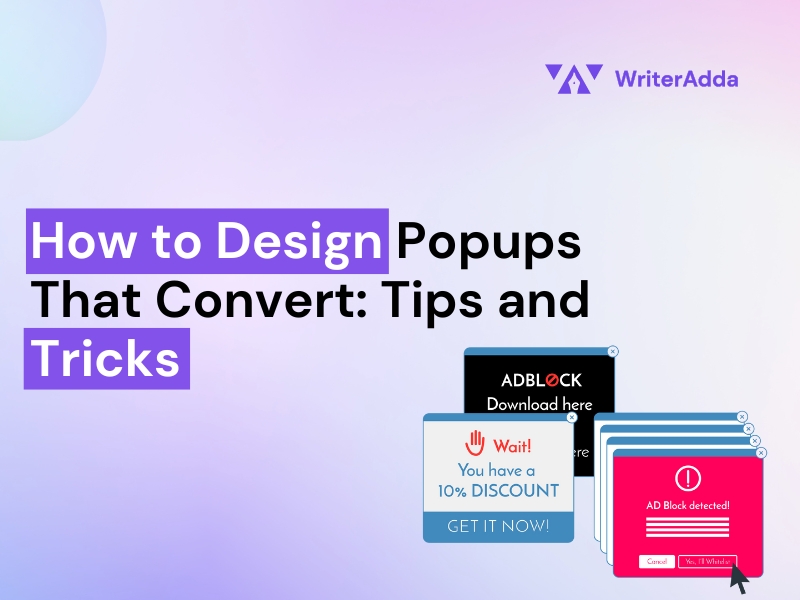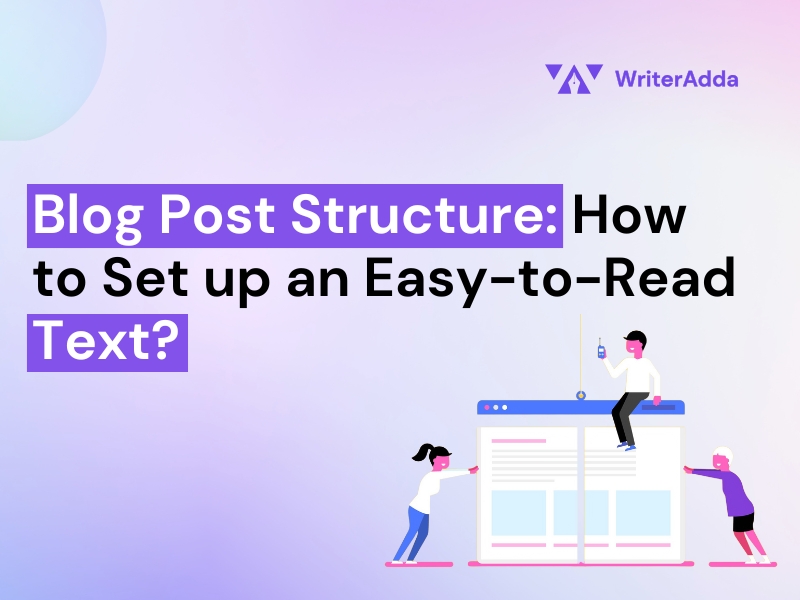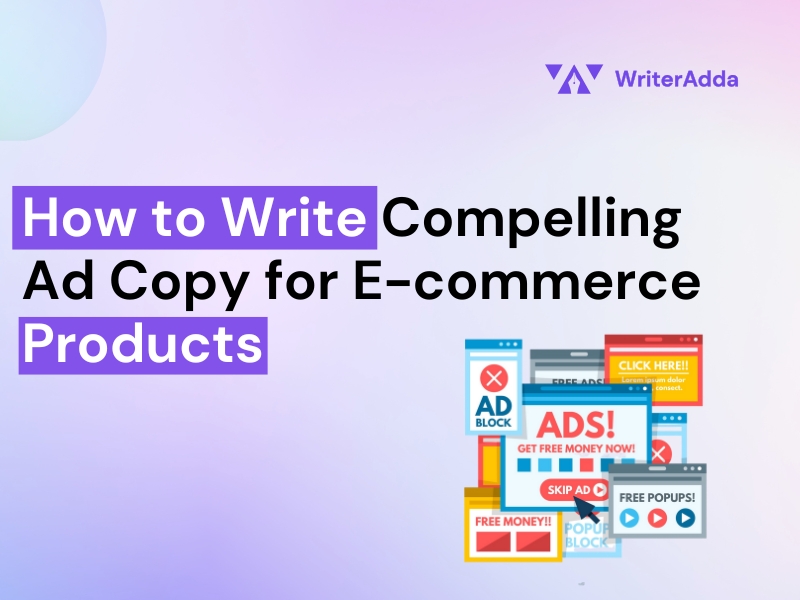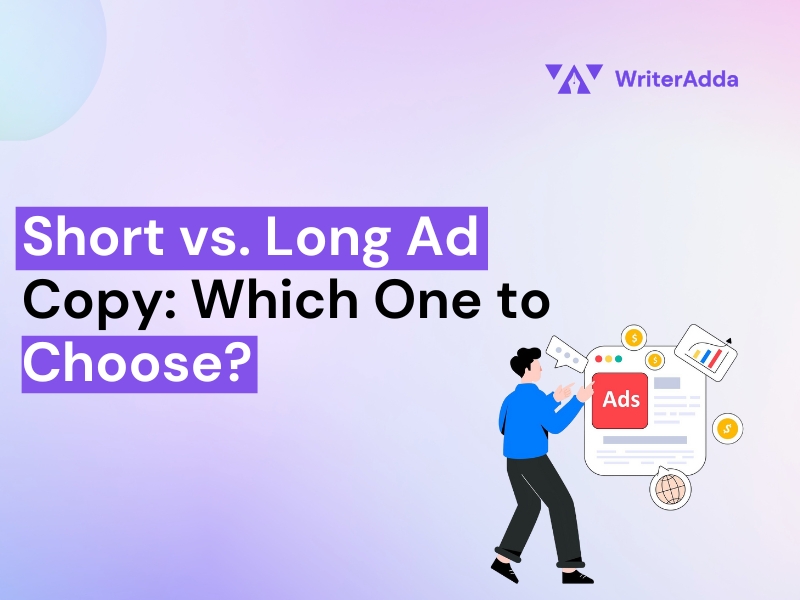Popups are usually seen as annoying hindrances that may end up driving audiences away from your page and site but when used correctly, it can lead to amazing conversion rates.
Thus, designing effective popups is critical not just for grabbing attention but for converting visitors into leads or customers. But to design and write compelling popup that convert is a task in itself so let’s explore effective popup design strategies that enhance user engagement and maximize conversions for your brand.
Why Popup Design Matters
First, let’s address why popup design is so crucial. While the content and value proposition of your popup are essential, the design plays a pivotal role in enhancing the effectiveness of your message. Popups typically appear suddenly and have only a few seconds to make an impression on visitors. In a world that constantly demands our attention, knowing how to create converting popups that stand out is no small feat.
The core purpose of a popup is to prompt visitors into taking action that benefits your business. However, the design of the popup significantly influences its success. A well-designed popup complements the user’s journey on your website, making the experience feel seamless and natural. This strategic integration can greatly enhance the user’s receptivity to your message and increase the likelihood of conversion.
Conversely, a poorly designed popup can disrupt this journey. For instance, consider a scenario where a brand like Mailchimp uses a popup that might only convert at about 2%. This means that 98% of their visitors experience an interruption that could lead to annoyance and potential disengagement, reflecting poorly on the brand.
Moreover, design can dramatically affect conversion rates. A compelling, beautifully crafted exit-intent popup can achieve conversion rates as high as 50%. This is in stark contrast to a basic, text-only popup presenting the same offer, which might only see a 10% conversion rate. That’s a staggering difference in effectiveness solely attributable to design quality.
Tips for Creating High-Converting Popups
Using the Right Colours
Colour plays a pivotal role in how a popup is perceived. Contrary to popular myths, there is no one perfect colour coordination that performs better than the other. It all depends on whether you can correctly convey your message and brand image using the colours. Choosing the right colours can evoke the right emotions, grabbing attention while also fitting seamlessly within the broader design of your site. For instance, a contrasting colour to your site’s palette can make the popup stand out, but it should still harmonize with the overall design to keep the experience cohesive.
Timing Them Right
Timing is everything when it comes to the effectiveness of popups. Launching a popup immediately after a visitor lands on your site can be premature and often results in annoyance rather than engagement. Visitors need time to become acquainted with your content before being presented with offers or calls to action. Conversely, introducing a popup too late might mean missing out on converting a visitor who is ready to engage but hasn’t been prompted to take action.
The key to successful popup timing is to sync them with specific user behaviors that indicate readiness to engage. For instance, exit-intent technology can detect when a user is about to leave your website and trigger a popup that offers attractive discounts or promotions, potentially changing the user’s mind about leaving.
Similarly, if analytics show that many customers abandon their carts just before checkout, a well-timed popup offering free shipping or a timely discount might be just what is needed to finalize the sale. Such strategic timing ensures that the popup is not only relevant but also comes at a critical moment in the visitor’s journey, enhancing the likelihood of keeping them engaged and converting them to customers. This approach of making compelling offers when the time is right is crucial for a popup strategy that yields effective results and improves user experience.
Keeping it Simple
“Simplicity is the ultimate sophistication,” and nowhere is this more applicable than in the design of popups. Given the brief window of opportunity to capture attention, both your message and design must be exceptionally straightforward. It’s essential to critically evaluate every word and design element in your popup, ensuring that each component serves a necessary function.
Strive for extreme simplicity in your popups, paring them down until only the core value proposition and a clear call to action (CTA) remain. Remember, most visitors will only glance at a few words of your popup content before deciding whether to engage further or dismiss it. This makes the design elements such as colors, images, and overall aesthetics as critical as the text itself in conveying your message effectively and swiftly.
In scenarios where the focus is on specific products, like on a category landing page, the necessity for simplicity becomes even more pronounced. Here, the design should minimize distractions, allowing the product and the offer to stand at the forefront. This approach not only respects the user’s time but also enhances the clarity and impact of your message, making the popup a powerful tool for conversion rather than just another digital interruption.
Optimize for Mobile Phones
As shopping on mobile phones continues to surge, largely driven by tech-savvy Millennials and Gen Z’s who prefer making purchases on their smartphones, optimizing popups for mobile is one of the most crucial popup conversion tips on here. With a significant portion of web traffic now originating from mobile devices, your popups must cater specifically to this audience, who demand the ability to interact with offers and shop directly from their smartphones, anytime and anywhere.
To effectively connect and captivate these users, it is crucial to discard the generic approach and tailor the experience to individual needs. Popups designed for desktop users often do not translate well on mobile devices as they can appear confusing and intrusive due to smaller screen sizes. Instead, mobile popups should be thoughtfully designed with consideration for the limited screen space and mobile-specific user interface. This includes ensuring that the popups are touch-friendly, easy to navigate, and do not hinder the overall user experience.
Make Popups Exit Easy and Fuss-Free
Making popups difficult to close is one of the most irritating mistakes in design. Ineffective popups that hide or lack a visible “X” button are seen as coercive and can repel potential customers, especially first-time visitors, damaging their initial impression of your brand.
Best popup designs will always ensure the close button on your popup is clearly visible and easy to use. Additionally, providing a straightforward “No, Thank You” option respects user autonomy and acknowledges that acceptance of an offer depends on genuine interest and readiness. Visitors may need time to deliberate, and forcing immediate decisions can be counterproductive.
Ethical psychological strategies can subtly influence decisions as well. For example, while selling online fitness training, offering the choices ‘Sign Me Up’ versus ‘No, I am completely fit’ can tactfully nudge visitors concerned about their fitness towards signing up. However, it’s essential to use such tactics responsibly, ensuring they enhance the user experience rather than feeling manipulative.
Integrate with Email and CRM Platforms
Going the extra mile in marketing often leads to the uncharted territory of success, and integrating your website popups with email marketing and CRM platforms exemplifies this strategy. While popups alone are effective for capturing leads, their potential multiplies when combined with these powerful tools.
A popup integrated with email and CRM platforms creates a robust system for not only capturing but also managing and converting leads more efficiently. For example, if your popup software is connected to a CRM tool like HubSpot or Salesforce, the leads you generate can be directly transferred to your CRM account for streamlined management. Similarly, linking popups with an email marketing platform means that any email addresses collected are automatically funneled into your marketing account, allowing for immediate and effective follow-up communication.
Modern popup tools are designed to support such integrations effortlessly. Tools like Picreel offer over 700 integrations with various CRM, email marketing, e-commerce, and social platforms, maximizing the effectiveness of your popups.
Use Exit-Intent Technology
Exit-intent technology can turn out to be a sophisticated tool in your digital marketing arsenal, capable of detecting when a user is about to leave your site. It allows you to capitalize on this critical moment by triggering a popup right as the user shows signs of exiting. This last-second engagement often serves as the crucial nudge needed to convert a visitor who might otherwise leave without any interaction.
Modern website popup tools utilize advanced monitoring techniques to track visitors’ digital footprints, click behavior, and exit intent. When these tools detect signs that a user is about to depart, they promptly display popups featuring compelling offers. This well-timed intervention can greatly enhance the chances of turning an exit into a successful interaction.
Conclusion
Effective popup design is essential for converting visitors into leads or customers. By focusing on user experience, maintaining simplicity, and aligning with strategic marketing goals, your popups can become a powerful tool in your digital marketing arsenal. Remember, the key is to enhance the user journey, not disrupt it, making every popup count towards building a positive relationship with your visitors.
Frequently Asked Questions
How do I measure the success of my popups?
Success can be measured using metrics such as the conversion rate (the percentage of users who take the desired action), the click-through rate (CTR) for popups with links, and the bounce rate post-popup display. Tools like Google Analytics can help track these metrics and assess the effectiveness of different popup designs and timings.
Can popups affect SEO?
Yes, especially if not properly optimized for mobile devices or if they significantly disrupt user experience. Google has guidelines on intrusive interstitials that can impact mobile sites' rankings. It's important to design popups that are helpful rather than obstructive to avoid SEO penalties.
Are there any legal considerations with popups, especially for collecting emails?
Yes, when collecting emails or any personal data, it’s important to comply with data protection regulations such as GDPR in Europe and CCPA in California. Ensure that users consent to data collection transparently, know what their data will be used for, and can easily unsubscribe or request data deletion.
How can A/B testing improve popup effectiveness?
A/B testing involves comparing two versions of a popup to see which performs better. Experiment with various components like the headline, content, offers, design, and timing to gauge effectiveness. This data-driven approach can significantly enhance the effectiveness of your popups by refining what resonates best with your audience.
What role does user feedback play in popup design?
Gathering user feedback is paramount, offering valuable insights into how actual users engage with your popups. This feedback can help identify issues and preferences, guiding iterative improvements. Consistently collect and assess user feedback to enhance popup strategies.




